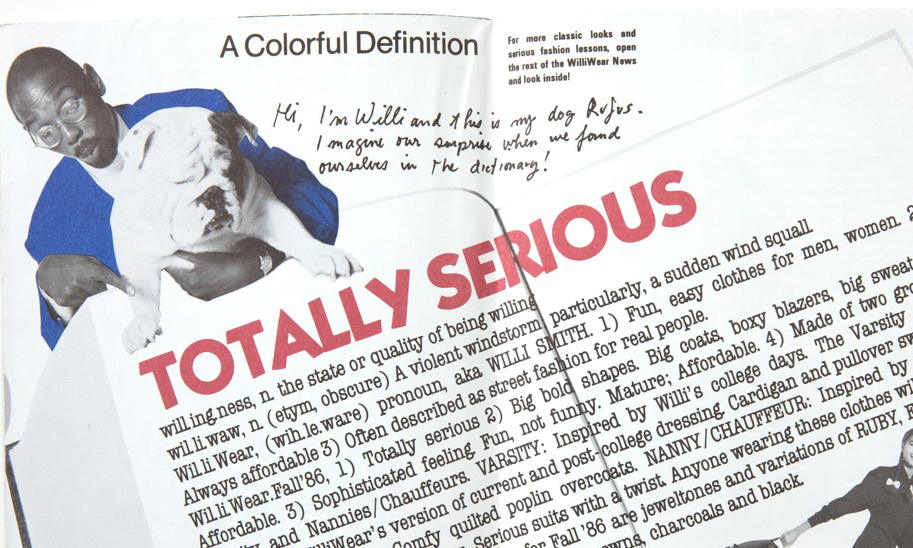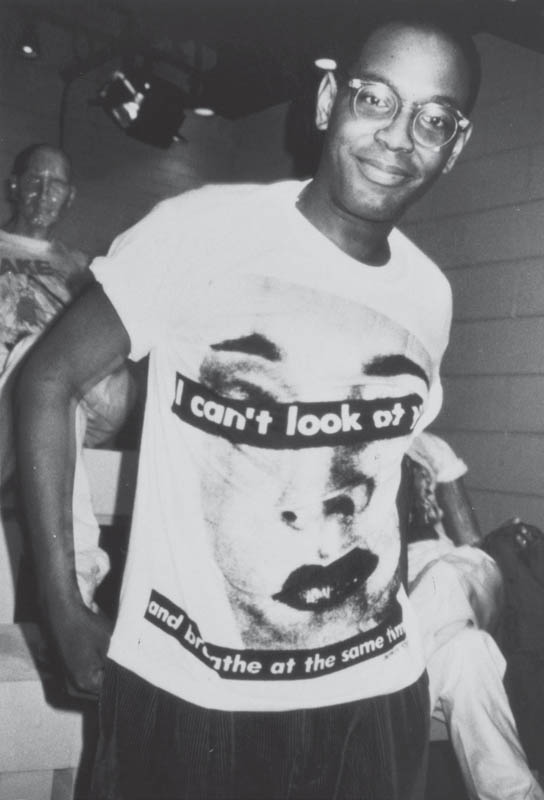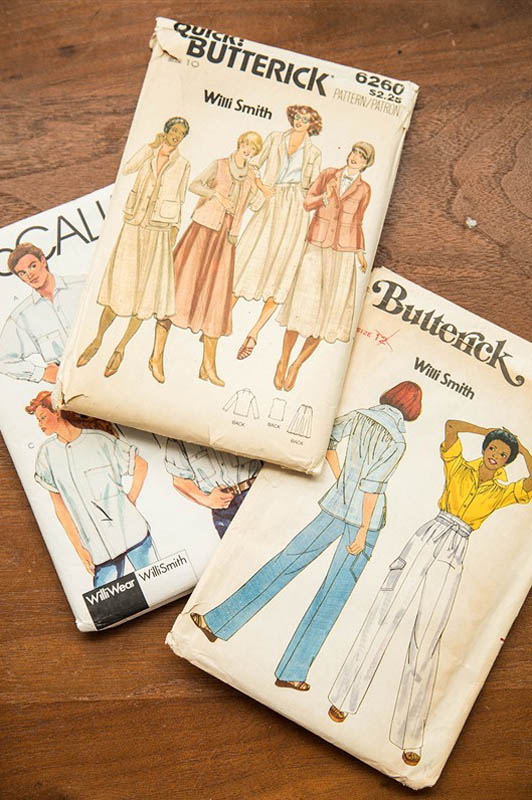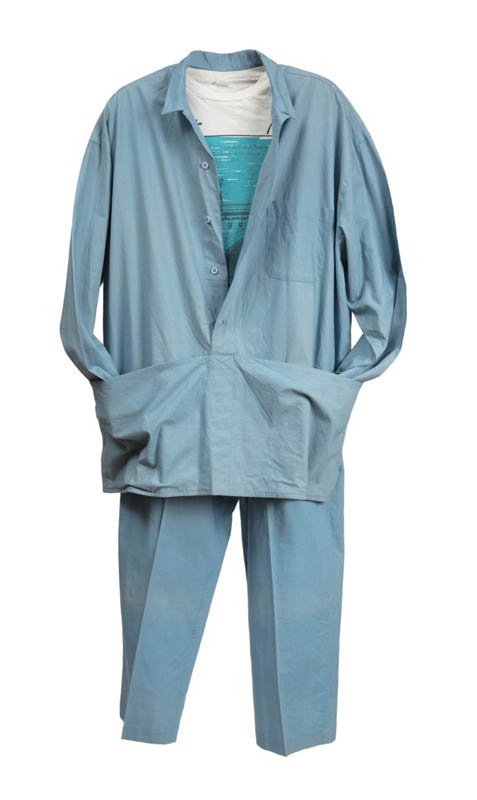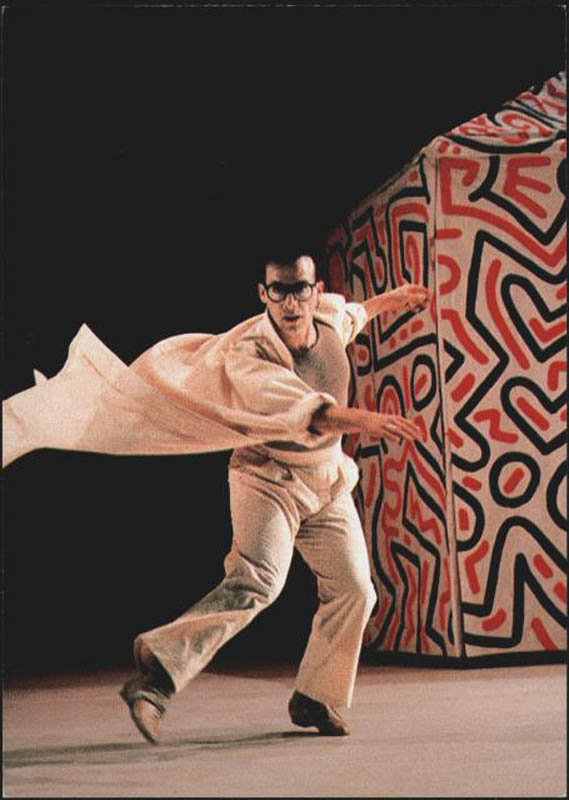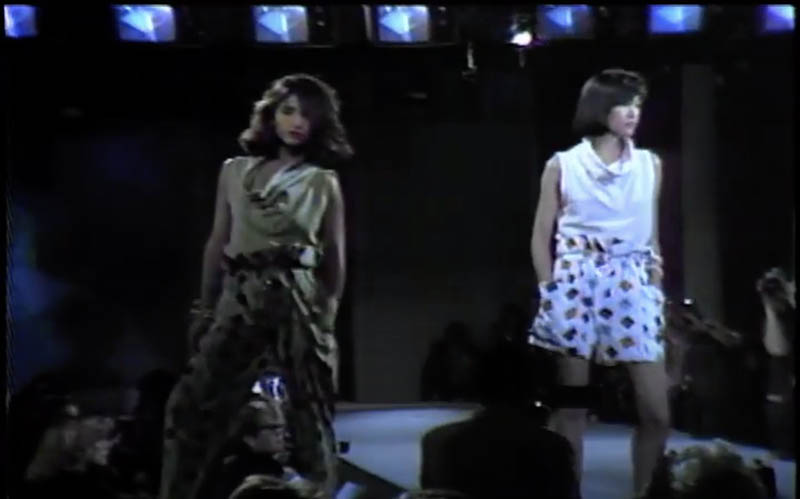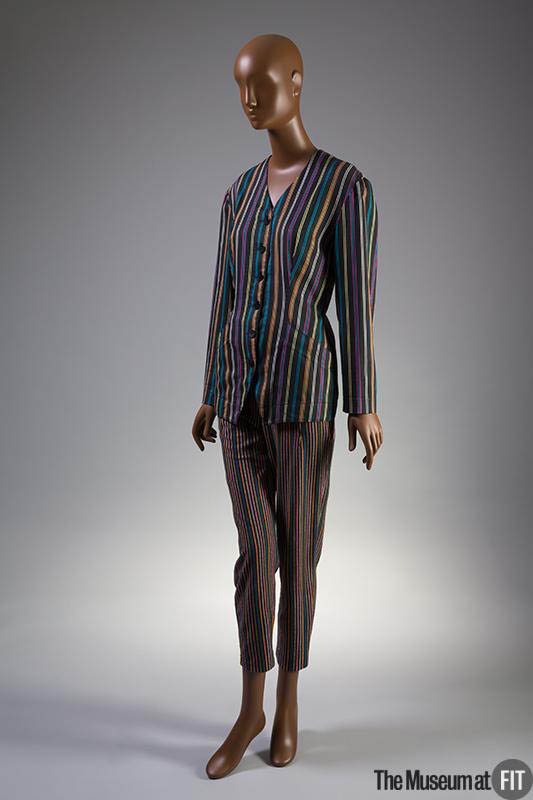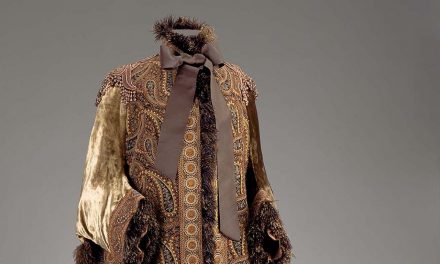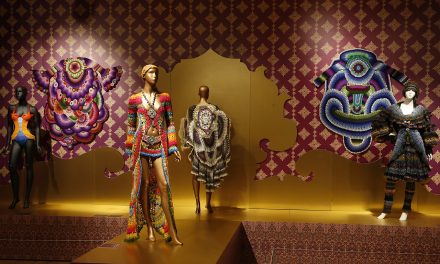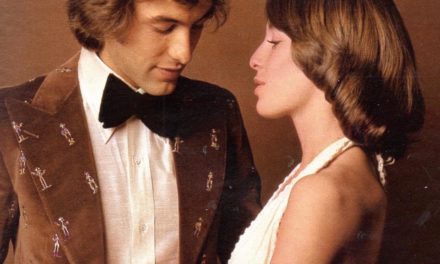About the Designer
Willi Smith was the popularly renowned designer behind Williwear, a womenswear line that opened in 1976 (Cunningham Cameron/ Fig. 1). He was known for his innovative blend of the newly-emerging concept of streetwear with high fashion. Smith collaborated with artists such as Christo, Jenny Holzer, and Barbara Kruger; bring avant-garde art to the everyday person through clothing (Earnest). Smith was the youngest designer to ever be nominated for the Coty award in 1971, and won the Coty American Fashion Critics’ Award for Women’s Fashion in 1983 (Singh)
Smith’s African American identity was integral to his work. Alongside designers such as Stephen Burrows and Scott Barrie, he was part of a generation of Black designers who gained mainstream commercial success (Cleveland).
Smith was born in Pennsylvania in 1948 and raised by ironworkers. He studied fashion illustration at the Philadelphia College of Art, and Fashion Design at Parsons. After college, Willi Smith worked with Arnold Scassi, where he learned about the inside workings of the mainstream high-end fashion industry (Giddings and Ray).
After working with the sportswear brand Digits, Smith and close friend Laurie Mallet founded Williwear in 1976. Both having had unsuccessful business ventures, Mallet convinced Smith to travel to India with her. He arrived in shorts and a pair of cowboy boots, and the two of them cobbled together a collection from the fabrics and notions that they could piece together. Upon Smith and Mallet’s return, their pieces caught the eye of Macy’s, where they were featured in the front window display (Mallet 19:20-25:30).
Williwear clothing had a sense of fun and ease. The brand was a quick success— earning $5 million in its second year of business (Museum at FIT). Smith was adored by the fashion press. Popular trade publication, Women’s Wear Daily quoted attendees of his shows raving about his unconstructed, colorful, and joyful clothing.
Smith believed in making fashion accessible to all; he created clothing that could be worn by both the wealthy and the working class. As he expressed in 1982:
“I’m not imposing any fantasy on anyone… what’s the point if you can’t put the clothes anywhere in this world? Clothing should go hand in hand with society.” (Cunningham Cameron)
Even as a designer of high-end clothing, Smith continued to design home sewing patterns for Butterick (Fig. 2). He valued the creative adaptation of home sewists, many of whom would not have been able to directly afford designs from his ready-to-wear collections (Lisby and França).
Fig. 4 - WilliWear Ltd. (American, 1976 - 1990). WilliWear News, 1986. Offset lithograph on paper; 24.1 × 17.1 cm (9 1/2 × 6 3/4 in). New York: Cooper Hewitt, 34.2019.6. Courtesy of Mark Bozek.. Source: Cooper Hewitt
Fig. 1 - Willi Smith (American, 1948-1987). Barbara Kruger, Artventure, 1984. New York: Cooper Hewitt Education Department. Source: Smithsonian Learning Lab
Smith was one of the earliest popularizers of streetwear. The ethos behind Williwear supported the rise of street style as an alternative to the traditional fashion system. Unlike conventional means of fashion, which prioritized the trickle-down effect and a prescriptive take on trends, streetwear emphasized authenticity and individuality (Polhemus). Williwear embodied this; the clothes were adaptable enough that the wearer could project personality onto the pieces, and wear them year after year.
Smith had no shortage of ties to the world of modern art. He collaborated with Christo and Jean Claude on multiple occasions. Smith designed the uniforms for both their famed Wrapping of the Pont Neuf in 1985 and Surrounded Islands in 1983 (Lebow/ Fig. 3). In 1984, Willi Smith designed his artist t-shirts (Fig. 1). He collaborated with twenty artists, many of them close friends, to create a series of t-shirts to be displayed in galleries as if they were the art itself (Mallet 30:00-31:50). In 1986, Smith worked with Kim Hastreiter, founder of Paper magazine, to create two issues of a newsletter entitled WilliWear News (Fig. 4/feature image). Smith also worked with contemporary artists such as Keith Haring when he became involved with the Brooklyn Academy of Music (Mallet 37:40-38:40/ Fig. 5).
Williwear clothing had a joyful sense of freedom. The silhouettes were baggy and unrestrictive, allowing the wearer to easily move through the day. As Nina Hyde of the Washington Post described:
“he was making loose, easy, simply made clothing before the others caught on. Now the Japanese are getting a lot of attention for their clothes that are big and simple and show off the fabric, but Willi has been in that mood for a long time.” (Darling)
Williwear clothing danced. As seen in Smith’s 1983 show with Nam June Paik, the clothing’s loose silhouette flowed and exaggerated the movement of the body (Fig. 6).
In his designs, Willi Smith drew inspiration from global fashion. He made frequent trips to India, and referenced the silhouettes of dhoti pants and the salwar kameez (Nichols and Jones). After a trip to Senegal in 1985, Willi Smith became increasingly inspired by African fashion (Lebow).
Willi Smith passed away from AIDS-related complications in 1987 at the age of 39 (Singh). In 2020, the Cooper Hewitt museum released a virtual exhibition about Smith, Street Couture, as well as a community archive of his work (Cooper Hewitt). Smith’s work was additionally featured in the exhibition, Black Fashion Designers at the Museum at FIT in 2016 (MFIT).
GALLERY
Fig. 2 - Willi Smith (American, 1948-1987). Willi Smith sewings patterns for Butterick and McCall's, ca. 1980-1987. Source: Parsons School of Design
Fig. 3 - Willi Smith (American, 1948-1987). Uniform, The Pont Neuf Wrapped, 1985. Cotton. New York: Cooper Hewitt, 34.2019.8. Courtesy of Mark Bozek. Source: Cooper Hewitt
Fig. 5 - Tom Caravaglia (American). Arnie Zane in the Bill T. Jones/Arnie Zane Company production "Secret Pastures" during BAM Next Wave Festival, costume design by Willi Smith, Fall 1984. New York: Brooklyn Academy of Music Archives, 1984.03326. Source: BAM Archives
Fig. 6 - Paul Tschinkel (American). Willi Smith & Nam June Paik, 1983. Source: Paul Tschinkel on Youtube
Willi Smith (American, 1948-1987). Pantsuit, ca. 1984. Cotton. New York: Museum at FIT, 2013.52.4. Gift of the Council of Fashion Designers of America (CFDA). Source: MFIT on Twitter
Willi Smith (American, 1948-1987). Willi Smith Advertisement in Vogue, vol. 174, no. 4 (April, 1984). Source: ProQuest
Willi Smith (American, 1948-1987). Yellow jumpsuit, 1969-1987. Cotton and plastic with thread. Washington D.C.: National Museum of African American History and Culture, 2007.3.156. Gift of the Black Fashion Museum founded by Lois K. Alexander-Lane. Source: NMAAHC
To Learn more:
- Cleveland, Pat. “Pat Cleveland — Willi Smith Community Archive.” Willi Smith Community Archive. Cooper Hewitt, n.d. https://willismitharchive.cargo.site/Pat-Cleveland.
-
Cooper Hewitt. “Willi Smith: Street Couture,” n.d. https://www.cooperhewitt.org/channel/willi-smith-street-couture/.
-
Cunningham Cameron, Alexandra. “About Willi Smith.” Willi Smith Community Archive. Cooper Hewitt, n.d. https://willismitharchive.cargo.site/About-Willi-Smith-1.
-
Darling, Lynn. “Let Them Wear Willi!” Esquire | The Complete Archive, December 1, 1984. https://classic.esquire.com/article/1984/12/1/let-them-wear-willi.
-
Earnest, Jarrett. “Willi Smith In Pieces.” Cooper Hewitt. Willi Smith Community Archive, n.d. https://willismitharchive.cargo.site/Willi-Smith-In-Pieces.
-
Giddings, Valerie L., and Geraldine Ray. “Trendsetting African American Designers.” In Berg Encyclopedia of World Dress and Fashion: The United States and Canada, edited by Phyllis G. Tortora. Oxford: Bloomsbury Academic, 2010. http://www.worldcat.org/oclc/966963199.
-
Lebow, Joan. “Willi Wear Filming in Africa, Ties in with Christo in Paris.” WWD, Sep 13, 1985, 20, https://libproxy.fitsuny.edu:2818/docview/1445645823?accountid=27253.
-
Lisby, Darnell-Jamal, and Luiza Repsold França. “Patterns for You.” Willi Smith Community Archive. Cooper Hewitt, n.d. https://willismitharchive.cargo.site/Patterns-for-You.
-
Mallet, Laurie. Willi Smith Oral History Project. Interview by Kelly Navies, July 18, 2019. https://willismitharchive.cargo.site/Laurie-Mallet.
-
The Museum at FIT. “Black Fashion Designers- Breaking Into the Industry,” n.d. https://exhibitions.fitnyc.edu/black-fashion-designers/?url=breaking-into-the-industry%2Fbfd-breaking-1-1.
-
“New York Now: Willi Smith for Willi Wear.” WWD, Apr 18, 1978, 20, https://libproxy.fitsuny.edu:2818/docview/1627300065?accountid=27253.
-
Nichols, Elaine, and Adrienne Jones. “Wedding Dress for the Black Fashion Museum.” Willi Smith Community Archive, n.d. https://willismitharchive.cargo.site/Wedding-Dress-for-the-Black-Fashion-Museum.
-
Polhemus, Ted. “Street Style.” In The Berg Companion to Fashion, edited by Valerie Steele. Oxford: Bloomsbury Academic, 2010. http://www.worldcat.org/oclc/1090806555.
-
Singh, Rajat. “Fashion Flashback: Willi Smith.” CFDA, February 17, 2017. https://cfda.com/news/fashion-flashback-willi-smith.

